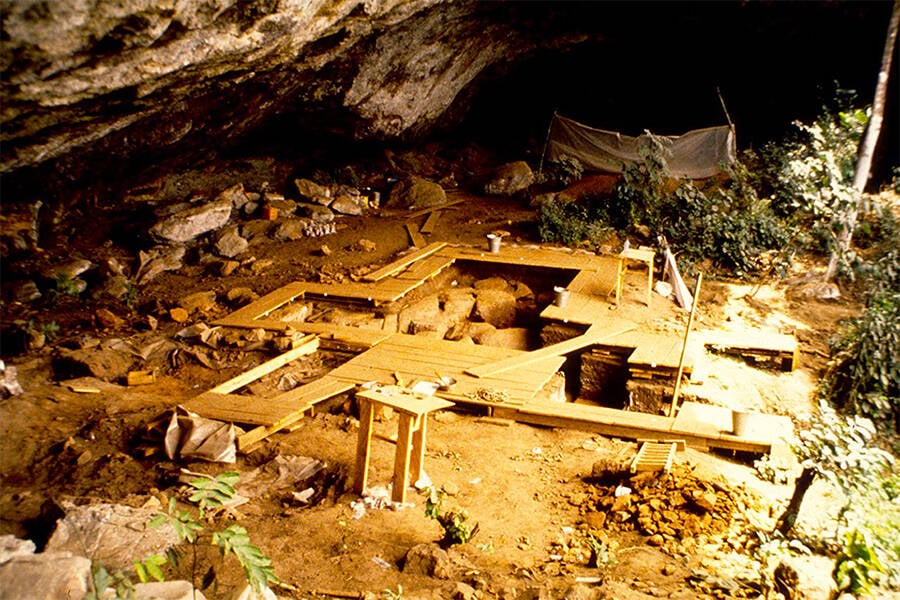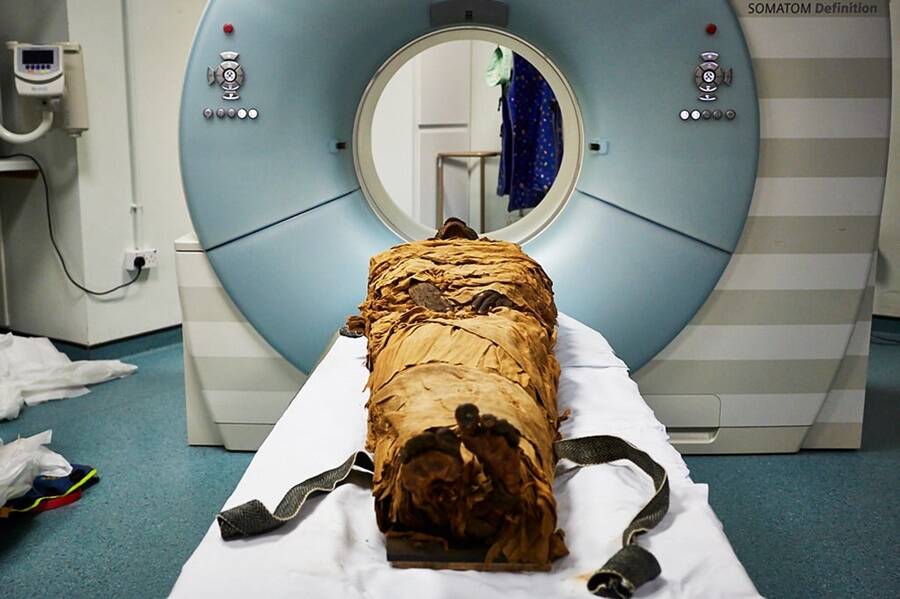Ancient Egyptian murder mystery solved, mysterious population of human ancestors uncovered, 3,000-year-old mummy's voice resurrected.
Murder Mystery Behind Peculiar Egyptian Mummy Solved After 2,600 Years

Ulster MuseumTakabuti has fascinated researchers since her 1834 discovery due to her blackened face and stunningly-preserved auburn hair.
Takabuti lived in the ancient city of Thebes during the 25th Egyptian dynasty before dying a horrible death some 2,600 years ago. For the last two centuries since her mummy was discovered, researchers have never been sure what killed her — until now.
State-of-the-art CT scans have found not only the knife wounds that explain her grisly demise, but have even found her heart, which had remained out of sight since she first started fascinating experts in 1834.
Read more here.
Archaeologists Uncover “Ghost Population” Of Previously-Unknown Human Ancestor

Pierre de Maret/St. Louis UniversityThe rock shelter at Shum Laka, where the remains of four ancient children were found.
In studying the origins of humanity, many experts begin in Africa, where ancient Homo sapiens arrived about 250,000 years ago. However, one immediately runs into a problem that has inhibited deeper research into humanity’s birthplace since we began looking for it.
The climate of Central Africa was long believed to be too hot and humid for ancient DNA to survive. In the past, this has made detailed genetic examinations of prehistoric human remains — which are essential tools in tracking historic migration patterns — in this region very difficult.
But now, a burial site with four skeletons buried thousands of years ago has been found in Cameroon with remarkably well-preserved DNA. It not only offers insight into the historic diversity of the area, but also points to a hidden “ghost population” of humans previously unknown to scientists.
Dig deeper in this report.
Scientists Recreate Voice Of 3,000-Year-Old Egyptian Mummy Using A 3D Printer

Leeds Teaching Hospitals/Leeds Museums and GalleriesScientists used a CT scan, 3D printer, and electronic larynx to recreate the voice of the 3,000-year-old mummy of Nesyamun.
Thanks to astonishing advances in 3D-printing technology, researchers have now been able to reconstruct the vocal tract of an ancient Egyptian mummy — allowing the world to hear his voice for the first time in 3,000 years.
Archaeologists resurrected the voice of an Egyptian priest named Nesyamun. He sang praises of worship at the Karnak temple in Thebes, reciting words to Egyptian gods like Nut, the ancient goddess of the sky and heavens.
When he died, his gift of melody was immortalized on his coffin with an inscription that read, “Nesyamun, true of voice.” But what exactly did Nesyamun’s voice sound like? Scientists were eager to find out.
Read on here.





